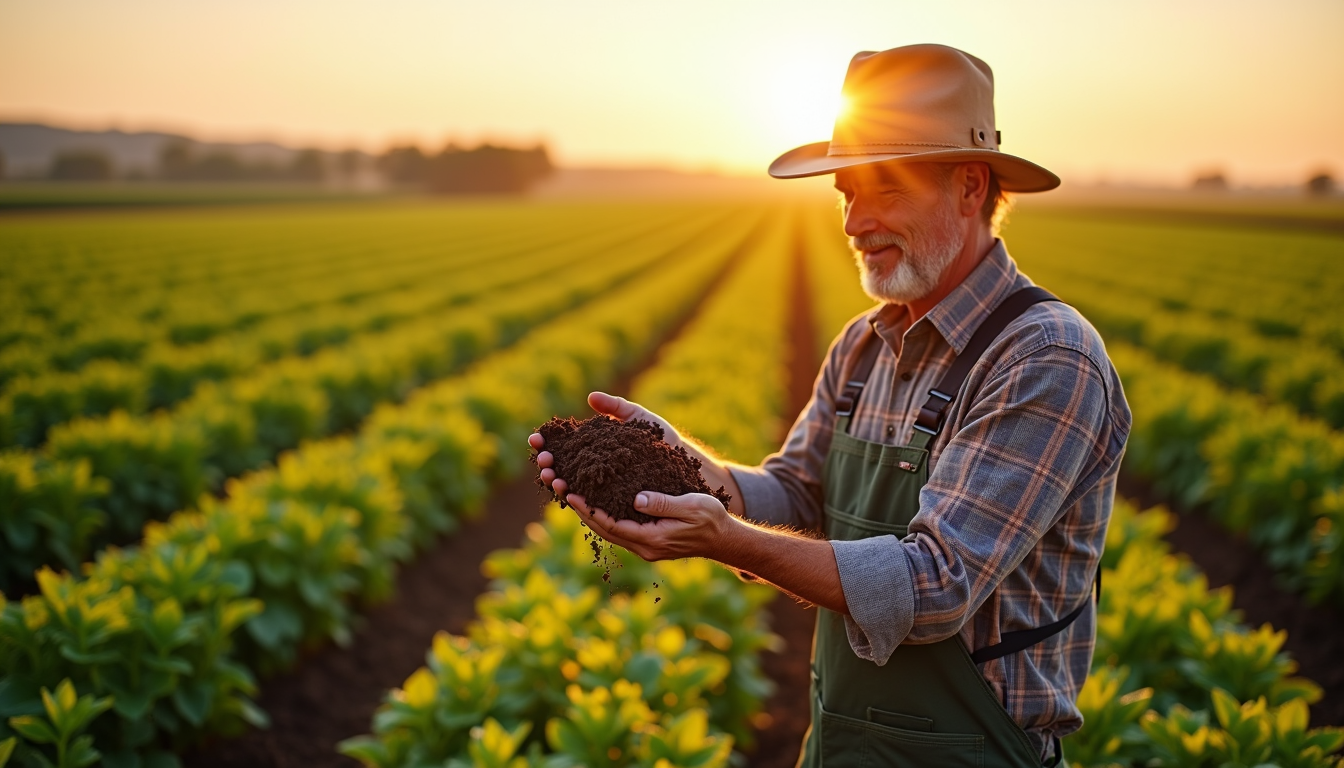Introduction
When it comes to buying farmland, most conversations revolve around location, pricing, and legal status. However, beneath the surface—literally—lies a factor that quietly determines the land’s long-term productivity, resale value, and profitability: soil quality.
Soil is not just a physical layer supporting plant roots; it is a living, dynamic system that directly influences the types of crops that can be grown, the input costs of farming, the sustainability of agricultural practices, and ultimately, the return on investment (ROI) from farmland. For investors, agri-entrepreneurs, and landowners, understanding soil quality is a key step in evaluating the true value of agricultural land.
1. What is Soil Quality?
Soil quality refers to the soil’s capacity to function effectively within an ecosystem. This includes its ability to:
- Support plant growth
- Maintain nutrient cycles
- Regulate water infiltration and drainage
- Support biological diversity
- Resist erosion and other forms of degradation
Unlike topsoil depth or texture alone, soil quality is a holistic measure, encompassing physical, chemical, and biological attributes.
2. Key Components of Soil Quality
a. Soil Texture and Structure
- Texture refers to the proportion of sand, silt, and clay.
- Loamy soils (balanced mix) are most productive.
- Clay-heavy soils retain nutrients but may have drainage issues.
- Sandy soils drain quickly but lose nutrients easily.
- Structure determines how soil particles bind together. Well-structured soils promote root penetration, water movement, and air flow.
b. Organic Matter Content
- Organic matter enhances nutrient retention, improves soil structure, and supports beneficial microbial life.
- Higher organic content often leads to greater productivity and lower input costs (less need for fertilizers).
c. Soil pH
- Ideal pH ranges from 6.0 to 7.5 for most crops.
- Extreme acidity or alkalinity can lock up essential nutrients, making them unavailable to plants.
d. Nutrient Levels
- Macronutrients (Nitrogen, Phosphorus, Potassium) and micronutrients (Zinc, Iron, Boron) determine crop growth.
- Deficient or imbalanced nutrient levels require expensive remediation.
e. Water Retention and Drainage
- Well-balanced soils retain enough moisture for crops without causing waterlogging.
- Drainage is especially important in high rainfall areas and for crops susceptible to root rot.
3. Soil Quality and Farmland Value
The value of farmland is directly influenced by soil quality in the following ways:
a. Crop Suitability and Yield
- High-quality soil supports a wider variety of crops, including high-value ones like fruits, nuts, or specialty vegetables.
- Yields are higher and more stable across seasons in good soils, increasing annual returns per acre.
b. Input Costs and Profit Margins
- Poor soils require more investment in:
- Fertilizers
- Irrigation
- Soil conditioners
- pH adjustments
- Over time, these recurring costs reduce profitability.
c. Land Longevity and Sustainability
- High-quality soil resists erosion, compaction, and degradation.
- Sustainable soil management practices maintain or enhance value over decades, which is crucial for legacy investment and resale.
d. Market Demand and Resale
- Buyers and corporate lessees prefer land with proven soil productivity.
- Agricultural companies conduct soil testing before leasing large parcels, making soil a key determinant in land desirability.
4. Soil Quality in Indian Context: Regional Variation
India’s diverse climate and geography result in different soil types with varying fertility and commercial potential:
a. Indo-Gangetic Plains (Uttar Pradesh, Bihar, Punjab)
- Alluvial soils: Deep, loamy, rich in nutrients.
- Excellent for wheat, rice, pulses.
- Financial Benefit: Consistently high yields with low input costs.
b. Black Cotton Soil (Madhya Pradesh, Maharashtra – Vidarbha, parts of Gujarat)
- Rich in clay and minerals, good water retention.
- Suitable for cotton, soybean, and pulses.
- Financial Benefit: Lower irrigation needs, good for large-scale dry farming.
c. Foothills of Uttarakhand and Himachal
- Mixed loamy soils with good drainage.
- Ideal for horticulture (apples, peaches), herbs, and floriculture.
- Financial Benefit: Supports niche farming and high-income crops.
d. Arid Rajasthan (Jaipur outskirts, Lalsot, Dausa)
- Sandy loam with low organic matter.
- Needs amendment, but suitable for:
- Organic farming with drip irrigation
- Medicinal plants like aloe vera, ashwagandha
- Financial Benefit: Low acquisition cost, potential for high-value, low-input crops
e. Karjat and Western Maharashtra Foothills
- Laterite soils, acidic but rich in iron and organic content.
- Supports rice, mangoes, floriculture.
- Financial Benefit: Highly valued for eco-tourism farms and weekend plantations.
5. Soil Testing: A Must for Investors
Before buying farmland, a soil health assessment is crucial. It provides insights into the land’s:
- Current nutrient profile
- pH level
- Organic matter percentage
- Contaminant presence (heavy metals, salinity)
Tools and Methods:
- Soil Health Card Scheme (Government of India initiative)
- Private soil testing labs and agronomist services
- On-field testing kits for quick analysis
This small initial investment helps avoid high remediation costs post-purchase and ensures better ROI forecasting.
6. Improving Soil Quality: Long-Term Value Strategy
Soil can be improved gradually, and doing so increases land value. Common methods include:
- Green manuring (growing plants like sunhemp and tilling them back)
- Crop rotation to maintain nutrient balance
- Compost and vermicompost addition for organic content
- Bio-fertilizers and micronutrient sprays
- Drip irrigation and mulching to control erosion and retain moisture
For long-term investors and landowners, soil development is asset enhancement. Fertile land not only performs better but attracts buyers and tenants with premium pricing.
Conclusion
In the rush to buy farmland, many investors overlook what matters most: the soil. Whether you’re aiming for profit from cultivation, resale, lease, or tourism-based models, soil quality is the foundation of farmland value.
Soil is not a fixed asset; it can be built, improved, and enhanced over time. For this reason, farmland should be seen not just as a land asset, but as a living investment—one that breathes through its fertility, feeds through its richness, and grows in value the more you nourish it.
When evaluating farmland, remember: what lies beneath determines what grows above—and how much you earn from it.




Join The Discussion